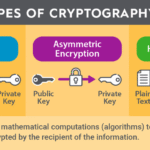In the realm of cryptography, symmetric encryption garners substantial attention due to its dual necessity for efficiency and security. The crux of symmetric encryption lies in the utilization of a single key for both the encryption and decryption processes. While the algorithm’s efficacy is commendable, the methodology surrounding key distribution often presents formidable challenges. It is crucial to ensure that keys are disseminated securely to mitigate the risk of interception or compromise by malicious entities. This exploration delves deep into the intricate dynamics of key distribution methods, their merits, and the underlying complexities that influence their application.
The common perception regarding symmetric encryption is that it provides a straightforward approach: since only one key is used, conceivably, the logistics surrounding its management should be uncomplicated. However, this notion belies the significant risks associated with key distribution. If a key is intercepted during transmission, the integrity of the entire encryption system collapses. Thus, the focus shifts to robust methods for secure key distribution, which can be categorized into several paradigms.
One methodology for key distribution is the **Pre-Distribution System**. In this approach, keys are predetermined and securely stored on each communicating entity prior to initiating the communication. This system permits immediate secure exchange since the key has already been embedded within both parties. However, this technique suffers from several inherent vulnerabilities. Firstly, it lacks scalability, as securely distributing keys to a large number of users becomes increasingly convoluted. For instance, if a new user needs access, the system may require a complete overhaul of existing keys, leading to inefficiencies and complications. Furthermore, if any of the pre-distributed keys are compromised, all communications relying on that key become vulnerable.
Alternatively, the **Key Management Protocols** offer a more dynamic solution. These protocols utilize a combination of asymmetric and symmetric cryptography to facilitate secure key exchanges. A prevalent example is the Diffie-Hellman key exchange, which enables two parties to generate a shared secret over an insecure channel. Each participant’s public key is exchanged and combined with their private key to produce a common shared key. This method not only enhances security but also allows for regular key rotation, reducing the likelihood of long-term key exposure. Nevertheless, the reliance on a third-party certificate authority for verifying identities introduces a vulnerability. If the certificate authority is compromised, or if there are security lapses in identity verification, the entire framework can be undermined.
The **Hybrid Encryption Systems** are another advanced strategy that amalgamate the attributes of both symmetric and asymmetric techniques. In this method, asymmetric encryption is utilized initially to securely exchange a symmetric key, which is subsequently employed for the data encryption process. This two-tiered approach harnesses the strengths of both methodologies while concurrently mitigating their individual weaknesses. With performance efficiency achieved through symmetric encryption and enhanced secure key transmission via asymmetric encryption, this method is increasingly favored in practical applications. Yet, despite these advantages, hybrid systems often necessitate complex implementations and may incur higher operational costs.
Moreover, the advent of modern technologies has engendered the development of **secure channels**, such as TLS (Transport Layer Security), which provide encrypted connections over the Internet. These secure channels have become a cornerstone for distributing keys as they establish a robust framework for secure communications. By leveraging protocols like TLS, entities can exchange keys in a manner that is substantially more resilient to eavesdropping. However, even secure channels are not impervious to threats; vulnerabilities in implementation, such as weak cipher suites or improper configurations, can compromise the entire system.
As the discussion unfolds, it becomes evident that the practicality of key distribution in symmetric encryption is not simply a technical issue but also a socioeconomic dilemma. The complexity of human interactions and the inherent asymmetries of information continue to obscure the pathways to absolute security. For instance, consider the implications of insider threats, where trusted individuals with access to encryption keys might exploit their position for malicious purposes. Protecting against such threats requires a multifaceted approach, encompassing stringent access control mechanisms, thorough monitoring, and comprehensive auditing practices.
In the digital realm, the demand for streamlined and secure key distribution mechanisms continues to escalate. As mobile devices proliferate and the Internet of Things (IoT) expands, the processes of symmetric key distribution must adapt to accommodate unprecedented scales and types of devices. Each device presents unique challenges, often exacerbating existing vulnerabilities in key management protocols. Consequently, a refined focus on **constant vigilance** and **adaptive strategies** is paramount.
In summation, the distribution of keys in symmetric encryption is an intricate tapestry woven from technological, sociopolitical, and psychological threads. The intertwining of distinct distribution methodologies reveals a profound fascination with achieving the elusive balance between security and accessibility. As the digital landscape evolves, the discourses surrounding symmetric encryption and key distribution will undoubtedly expand, prompting relentless innovation and inquiry into this critical aspect of cryptography. Addressing these challenges not only enhances communication security but also fortifies the foundations upon which trust can be built in an increasingly interconnected world.







Leave a Comment